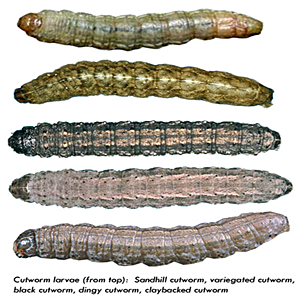
|
|||||||
| Home | About Forestry | Eco-Tourism | Forestry Addresses | FAQs | Contact Us | |
|||||||
| Pest Management | |||||||
PEST MANAGEMENT IN FOREST NURSERIESMAJOR PESTS CUTWORMS (Lepidoptera-Noctuidae) The cutworms are mostly injurious to the conifers like deodar pines etc. in the month of March – April. They also attack seedlings of teak, casuarinas, cassia and cashew in plains during August to October. The fertilized female moth of this insect lays about 2000 eggs in small lots on the humus, stones, weeds and other plants. After 26 days, hatching takes place and the larvae known as cutworms, feed on the dry leaves and green vegetation. During day, these cutworms hide in burrows of 30 to 75 mm deep in soil. At night, the larvae come out from the burrows to feed on the seedlings by cutting through the stem at ground level. They rarely claim and cut down the plants which are too large in size. The full grown larva is smooth, having short hairs which measures about 40 mm in length. Important cutworm species are, Agrotis ipsilon, A.flammatro,A.segeturn, Laphygma exigua and Spodoptera litura.
|
|||||||
| Home | About Forestry | Eco-Tourism | Forestry Addresses | FAQs | Contact Us | |
|||||||
| © All Rights Reserved. TNAU-2014. |
|||||||


